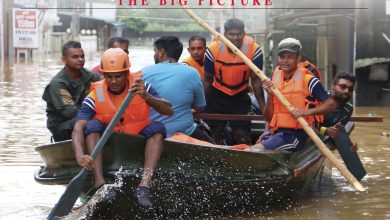THE BIG PICTURE
A TRUE GEM?
Sri Lanka can only look forward to a great future if its politicians and the people change course
The widely quoted tweet by global financier Nathaniel Rothschild who visited Sri Lanka in January may be what the doctor ordered for a nation in disarray – but it would be prudent to subject it to a reality check.
“Just finished a trip to learn firsthand about SL’s suitability as a manufacturing location for electronics. Came away highly impressed by the  Govt. of @PresRajapaksa and its pandemic response, as well as the businesses I met. SL is a true gem with a great future,” the British-born billionaire and Chairman of UK listed manufacturer Volex tweeted.
Govt. of @PresRajapaksa and its pandemic response, as well as the businesses I met. SL is a true gem with a great future,” the British-born billionaire and Chairman of UK listed manufacturer Volex tweeted.
Sri Lanka is indeed a gem; a paradise isle like no other with not only a growing geopolitical importance but a geographic location of significance to trade and within reach of Asia’s emerging economic power bloc, which centres on China and India.
And indeed, its people are both hospitable and talented – albeit that the seemingly irreversible brain drain could potentially put paid to its abundant human resources.
On the contrary, Sri Lanka continues to grapple with a Third World political culture and the spreading cancer of corruption, which has its roots in the sphere of politics but branches out to the very people who elect the nation’s lawmakers.
Sri Lanka’s economy meanwhile, may have displayed resilience over the years – having withstood the ravages of two insurgencies, a protracted civil war, a deadly tsunami, a shameful constitutional coup, the terrorist attacks of Easter Sunday in 2019 and now a global pandemic that has virtually brought it to a grinding halt – but it wouldn’t be unfair to say it has yet to realise its full potential.
The fallout from the economic malaise and widespread corruption means that Sri Lanka continues to have to service a never-ending debt spiral, which not only has the Treasury teetering on the edge but severely undermines its development agenda.
In the meantime, little progress has been made to circumvent the ethno-religious divisions that rear their ugly head from time to time – at the very least, by promoting a Sri Lankan identity.
Likewise, little has been done to bridge the gap between the haves and have-nots, by both the state and the private sector – let’s face it, the working poor continue to live a hand-to-mouth existence in 21st century Sri Lanka.
So the gem is in desperate need of a polish… the billion dollar question is who will do the polishing.
– Editor-in-Chief





